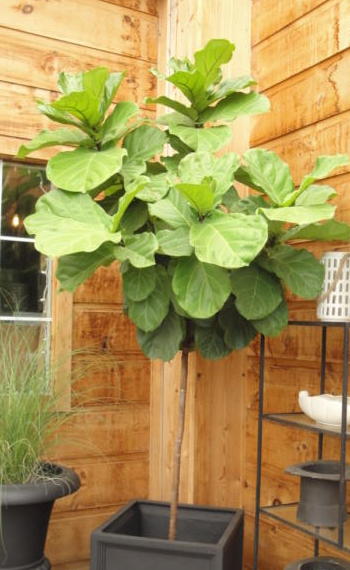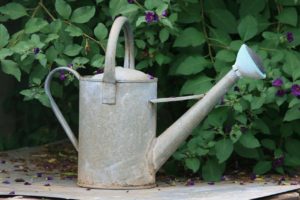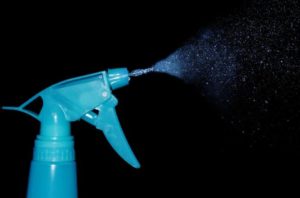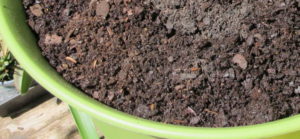“What’s Wrong With My Fiddle-Leaf Fig?”
There are few houseplants that exemplify architectural presence to the degree that Ficus lyrata does. Turn the pages in any home decor magazine or visit an online furniture showroom and you’ll see a statuesque fiddle-leaf fig in the corner of a perfectly-appointed living room. “That’s what mine used to look like,” you’re thinking, as you lament the pitiable specimen clinging to life in the spare bedroom.
Large plants can cost hundreds of dollars. Even a small bushy fiddle-leaf fig at the garden center can run $40.00 or more. It’s worthwhile to get this one right. The following suggestions might help.
Light
Indoors, the fiddle-leaf fig prefers 2 or 3 hours of direct sunlight in the morning or early afternoon, and bright indirect light the rest of the day. During the summer months, keep the plant away from hot sun; it needs adequate air circulation between the plant and the window. Leaves can burn if they’re too close to the glass.
Skylights, light-colored floors and walls, and large windows that expose the plant to very bright indirect light for most of the day might provide enough light for the fig to remain reasonably healthy. But growth will be stronger in partial sun.
During the cooler months of the year, figs welcome a few more hours of direct sunlight.
Blame It On Hormones
The segment of a young stem (the internode) between leaf attachments (the nodes) will lengthen in response to lower light levels. Hormones cause cells in the shady side of the stem to elongate. That’s why the stem turns toward the light (phototropism).
A fully shaded stem will stretch as the plant searches for a stronger source of light. This stretch will be noticeable in the softer tip growth; woody stems won’t elongate.
If the leaves were stacked closely together at one point, and now they’re spaced farther apart along the stem, the plant is not getting as much light as it was before. Adequate sunlight keeps a plant more compact by preventing internode stretch.
Don’t place the plant in low light or in the corners of a room despite what you see in those magazines or in other media. If the fig tree doesn’t receive adequate light, it will begin to decline. One of the first signs that the plant is in decline is loss of leaves. And fig trees are notorious for signaling distress!
Watering the Fiddle-Leaf Fig
When the top 2″ or 3″ of soil in a large pot feels dry to the touch, it might be time to water. Don’t just feel the surface of the soil, though. You must feel the soil well below the surface. Although it feels dry on the top of the root ball, the soil could be moist enough 6″ down.
A narrow unfinished wooden dowel inserted most of the way into the soil will indicate the need for water if it comes up dry. Let it sit in place for 15-20 minutes before removing it.
Most moisture meters I’ve tested did not truly measure the moisture in the soil. The expensive models should be more accurate. Or lift the pot. After a while, you get a “feel” for how heavy a pot of moist soil weighs.
A full, leafy plant in a small pot dries faster than an overpotted sparsely-leaved plant. Don’t allow the entire root ball to go completely dry, but don’t keep it wet all the time either. If in doubt, don’t water, especially in cloudy weather. If there’s no sign of wilt, the fiddle-leaf fig can go another day or two without watering.
Never let the plant sit in a saucer of water for more than 20 minutes. Remove any water that is not absorbed through the drainage holes in that period of time. The soil in a tall pot will absorb water by capillarity up to a certain point. At that level, the force of gravity overpowers capillary action, so you will need to apply more water to the dry soil near the top.
A fig tree that is often overwatered or allowed to sit in water too long will suffer root rot and might not recover. Fungal infections from overwatering cause brown patches in older leaves. Eventually, all the leaves could fall off the tree.
Use water that is warmer than room temperature. In winter, lukewarm water for tropical plants keeps them more comfortable. Here, I keep indoor air temperatures between 60° and 68°F in winter. Water, tested with an aquarium thermometer, should read around 85° to 90° for plants such as figs, pothos, philodendron, Chinese evergreen, basil, alocasia, and African violet.
Water well enough to moisten the entire root ball. Not watering thoroughly results in dry soil lower in the pot, and roots there will die off. Applying small amounts of water a couple of times a week is not a good practice. Water thoroughly; then let the soil dry.
A Hasty Exit
Sometimes, water exits the drainage holes immediately after watering. In this case, the soil mass might have shrunk, which happens when soil has thoroughly dried out. Also, during transportation, the root ball might have shifted in the pot.
A gap has opened up between the inside of the pot and the outside of the root ball. Water finds the path of least resistance, following that air space to the holes at the bottom of the pot. But most of the soil stays dry. Fill the space with potting soil, using a dowel to firm in the new soil. Then the water will more slowly percolate through the root ball.
Humidity
Fig trees, like many tropical plants, benefit from additional humidity when the air is dry. Simply grouping plants together will raise humidity in their vicinity, and all will benefit.
Using large saucers filled with pebbles and water will help raise humidity. The bottom of the pot should always be above the water level in the saucer. This arrangement is easier to maintain for smaller pots. If your home is especially dry, consider using a humidifier.
The positive effects of misting last only as long as there is a film of water on the leaves. And that’s only a few minutes. When water evaporates, a small amount of white mineral residue from the water persists on the leaf. It will build up over time but can be removed by wiping the leaves with a solution of horticultural oil on a soft cloth. Don’t use vegetable oil or mayonnaise. Look for horticultural oil. It’s a good idea to periodically wash the foliage to remove dust and grime.
Keeping foliage damp for long periods of time can initiate bacterial infections. Both young and older leaves can develop brown spots and yellow patches. These infected leaves will fall off.
Don’t place a fiddle-leaf fig where HVAC registers blow cold or hot dry air toward the foliage. Tender new leaves will turn brown on the edges. Louvered registers usually can be closed or use a deflector to change the direction of the air flow.
By the way, it’s normal for the fig tree to drop an older leaf or two now and then. As long as there is a net gain of healthy foliage, it’s probably not a concern.
Temperature
Avoid placing fiddle-leaf figs in cold drafts. These plants, members of the mulberry family (Moraceae), originated in warm, humid areas of western Africa. They appreciate temperatures that are at least 63° to 65° at night and 68° to 70° in the daytime. But keep in mind that the higher the temperature, the lower the relative humidity.
If you keep your house in the mid 70’s in the winter, and are not uncomfortable dropping the temperature a few degrees, the higher relative humidity will benefit both you and your plants.
Fertilization
Plants purchased from garden centers are usually fertilized on a schedule, so ask a salesperson if your plant is due for fertilization. For the fiddle-leaf fig, and for all plants, it’s better to underfertilize than to overfertilize.
Too much fertilizer will burn the roots and could kill the plant. It will not make the plant grow faster! If you accidentally gave the plant too much fertilizer, flush a few to several gallons of clear water through the root system to flush out the excess. Use the fertile drained water in the garden rather than letting it go down the drain.
Use balanced fertilizers formulated for houseplants, such as 12-12-12 or 20-20-20, every 5 or 6 weeks during the growing season, usually March through October in the northern hemisphere. Follow dilution rates indicated on the package. Plants growing in less than ideal conditions, though, should be fertilized less often or at more diluted rates.
If the plant is in poor health, fertilize once at one-third the recommended rate, and try to improve the growing conditions. Wait to see how the plant responds before resuming the regular schedule. Fertilizing a plant that doesn’t need it or one that is frail (from something other than lack of nutrients) will exacerbate any problems it already has.
You won’t have to fertilize as often if you use slow-release (or timed-release) products. They simplify our gardening chores and are a great convenience. The prills are used up faster at warm temperatures and in moist conditions, such as when the plant is placed outdoors in the summer. For example, a timed-release product that says “6 months” on the label might need to be reapplied in 3-4 months at 85°.
Repotting
When the roots are very crowded in the pot, it might be time to repot your plant. Consider doing this task in mid-spring to early summer. This will give your plant enough time to grow a strong root system before winter comes.
Don’t wait until autumn to do this, because shorter daylength and cooler indoor temperatures slow down plant processes. The fig will grow new roots very slowly, if at all, in average indoor conditions. That’s when a plant can suffer root rot. New soil that has no roots growing in it stays wet for a long period of time, which can damage nearby roots.
Choose a nursery (or ordinary plastic) pot that’s only 1-2″ larger in diameter. Score the outside of the root ball in several places with a knife. Or tease out roots from the surface of the root ball. This slight injury to the roots stimulates rapid re-rooting.
Don’t put a small plant into a huge pot thinking this will make it grow faster. It won’t.
All new soil goes below and around the original root ball, never on top of it. Heavily composted potting soil should have coarse sand and pine fines mixed in for better drainage. Firm it in well, filling all gaps between the root ball and the pot. For residential purposes, a large 7′ or 8′ tall plant can stay in a 14″ to 18″ pot indefinitely.
Since nutrition will be provided by fertilizer, there is no need to repot more often than every year or two while the plant is young. Recently repotted plants will not need fertilizer for at least 6 to 8 weeks, or until new soil has filled with roots.
Don’t worry if your fig is getting potbound. It’s easier to manage a fiddle-leaf fig in a somewhat tight pot. And it runs a lower risk of damage from overwatering.
Headings
Page 1: “What’s Wrong With My Fiddle-Leaf Fig?”, Light (Blame It On Hormones), Watering the Fiddle-Leaf Fig (A Hasty Exit), Humidity, Temperature, Fertilization, and Repotting
Page 2: But If You Want a Nicer Pot (Double-Potting), The Finishing Touches, Pruning the Fiddle-Leaf Fig (When To Prune), Outdoor Living (Before Moving Back Indoors), Insects and Mites, and Picture Perfect




Hi Anita–
Plants always try to face their leaves toward the light. If the light levels are too low, the branch tips will stretch toward the source of light. Check the internodes, the sections of stem between the leaf attachments. If the newer internodes are longer than the ones that formed in the nursery, then the plant is getting less light than it used to. Move the tree to a brighter (sunny!) window, and open all curtains. It’s normal, though, for the newest leaves to point upward.
If you have skylights, but not much lateral light, the stems will aim for the sky. Place a few 12-watt compact fluorescent lights so they shine at the sides of the plant for several hours each day, maybe in late afternoon and evening. Or use a couple of lamps, a few feet off the floor or halfway up the plant, shining on the side of the plant that faces you. Make sure the leaves can’t feel any heat coming from them. After a couple of weeks, the plant’s leaves should flatten out.
I had a customer with a large weeping fig (another ficus species) in her living room, illuminated by lights at the floor but not much other light. The leaves twisted downward to face the light, but the customer wanted them to grow normally. I recommended installing can lights in the ceiling, in front of (but not directly over) the plant. She had this done, and the plant grew very nicely after that. But a large-leaved plant really needs strong light coming from all directions.
It’s a good idea to turn the plant every week or so. This will help it grow evenly.
Sometimes a propagated plant adopts characteristics of the parent plant according to where the cuttings were taken. It’s possible that your plant was a cutting taken from a branch that had upward facing leaves, regardless of light. Not likely the problem, though.
I hope that helps!
Why are my FLF leaves pointing straight up so that we see the back of the leaves instead of the lush green top of leaves? How can I make them”relax”?